14 best video-on-demand (VOD) platforms in 2025

If you’re a content creator looking to share your video content with the world, video-on-demand (VOD) platforms could be your new best friend. Having a reliable video-on-demand platform can make all the difference in reaching your audience effectively.
One standout in this crowded market is Sellfy. For those looking to monetize their videos with ease and efficiency, Sellfy offers an impressive solution. It’s not just another video-on-demand platform—it’s an all-in-one ecommerce tool designed with creators in mind.
Supporting a range of video formats like AVI, Adobe Flash, MPEG, MPEG-4, QuickTime, WebM, and more, Sellfy ensures your VOD content looks top-notch. With unlimited bandwidth and storage for files up to 10GB, it’s perfect for high-definition videos.
Plus, it offers both downloadable and streamable options, so your audience can enjoy your video content their way. And the cherry on top? Sellfy doesn’t charge transaction fees and provides instant payouts, meaning you keep more of your earnings.
In this article, we’ll dive into the 14 best VOD platforms of 2025, exploring what makes each one unique and how they can help you sell video-on-demand content.
Why Sellfy is the ideal VOD platform choice
When you’re on the hunt for a top-notch video-on-demand platform, Sellfy stands out as a front-runner, ticking all the right boxes.
So, what exactly makes Sellfy the best VOD platform?
Sellfy offers an all-in-one video-on-demand solution that’s not just user-friendly but also incredibly effective. First off, the platform supports a wide variety of video formats to ensure your VOD content is always accessible and of the highest quality.
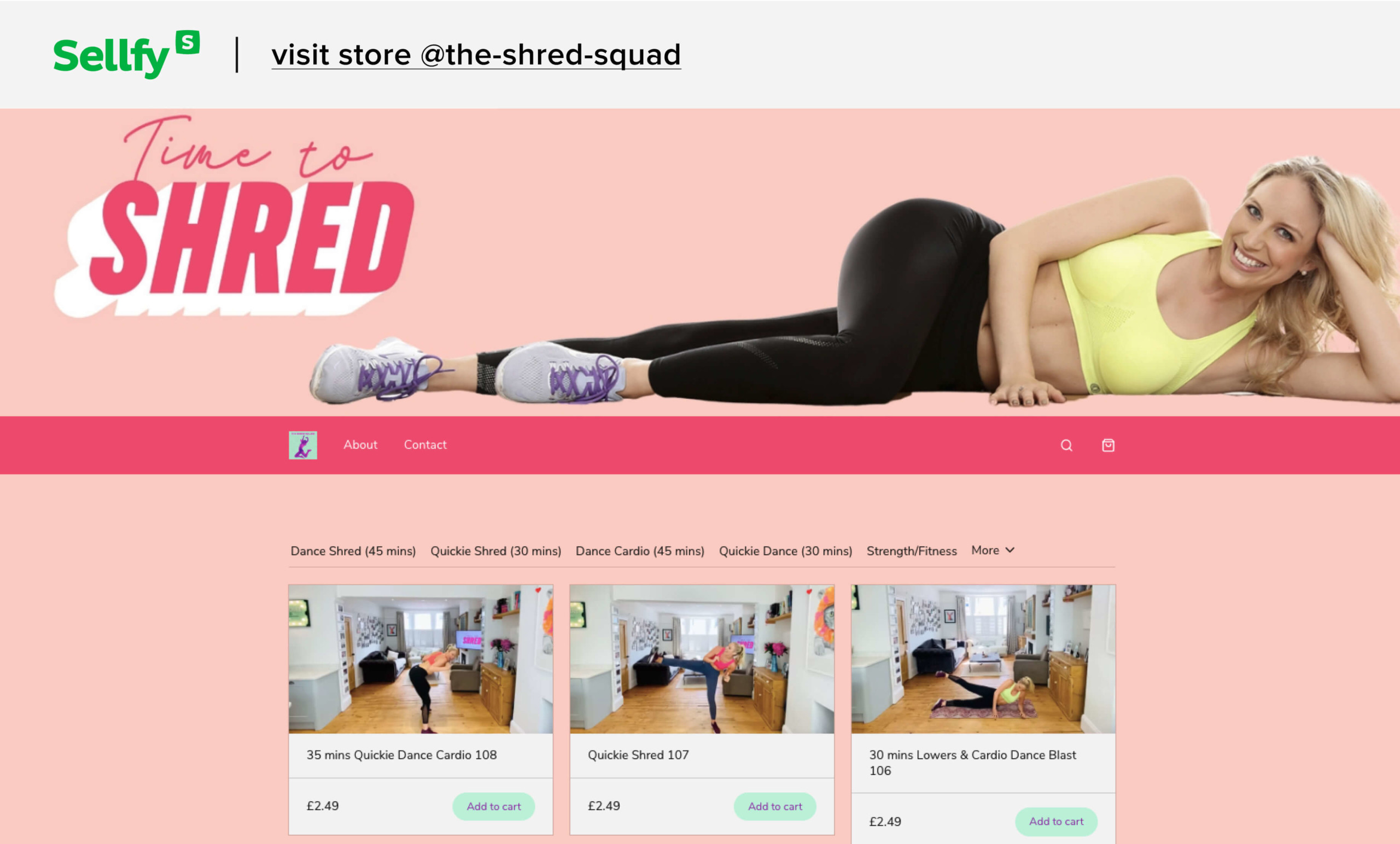
Whether your audience prefers video streaming or downloading, Sellfy has you covered. Also, with unlimited bandwidth and storage, you can upload as much video content as you need without fretting over extra costs or limitations.
This is a game-changer for creators who produce large volumes of VOD content or work with high-definition files.
One of Sellfy’s standout features is its ability to handle large file uploads—up to 10GB per file! This is a lifesaver for filmmakers, course creators, and anyone dealing with hefty video files.
And let’s talk money:
Sellfy’s zero transaction fees and instant payouts mean you keep more of your hard-earned profits. Unlike other platforms that take a chunk of your earnings, Sellfy ensures you get the lion’s share.
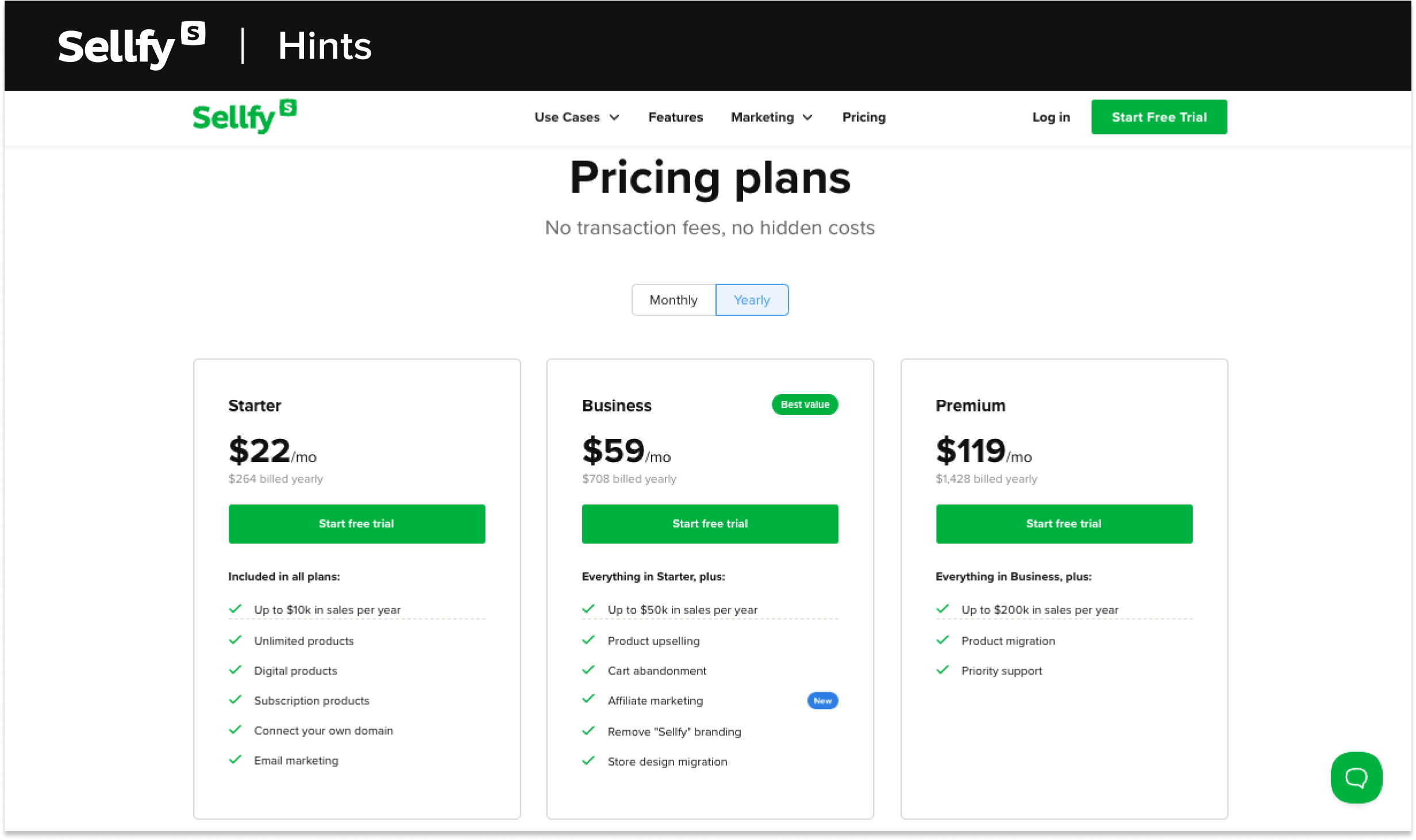
But it’s not just about you—Sellfy also offers a seamless experience for your customers. They can easily stream or download your videos, which makes it super convenient to consume your video content in their preferred way.
This kind of flexibility can lead to higher customer satisfaction and, ultimately, more sales.
In a nutshell, Sellfy is the go-to video-on-demand platform for creators who want to maximize their control, profits, and customer satisfaction.
What is VOD?
Imagine having the power to watch whatever you want, whenever you want—no more being tied to a specific broadcast time. That’s the magic of video-on-demand (VOD)!
It has revolutionized the way we enjoy media, allowing us to catch our favorite shows, movies, tutorials, or any other video content at our own convenience.
Think of VOD platforms as digital treasure troves where you can rent, buy, or subscribe to access a vast array of VOD content. From blockbuster movies and binge-worthy TV series to educational videos and fitness routines, these platforms have it all.
The boom in VOD has been driven by the widespread availability of high-speed internet and the explosion of devices like smartphones, tablets, and smart TVs that make video streaming a breeze.
In essence, VOD is all about flexibility and convenience for viewers, while also providing creators with a fantastic way to distribute and monetize their video content.
What is the difference between video-on-demand & streaming?
So, what’s the difference between video-on-demand (VOD) and streaming? They might sound like the same thing, but they’re actually a bit different.
Video-on-demand (VOD) is all about freedom. Unlike traditional TV where you have to tune in at specific times, VOD lets you start, pause, rewind, and fast-forward to your heart’s content. Think of platforms like Netflix, Hulu, and Amazon Prime Video—they’re all VOD services.

Now, streaming is the tech behind how you get that video. When you stream, you’re not downloading the whole thing. Instead, the video comes to you in small chunks that start playing right away. It’s what makes both VOD and live broadcasts possible.
So, when you’re watching a YouTube video or catching a live sports game online, you’re streaming. Streaming can be live or on-demand. Live streaming is like watching a news broadcast or a gaming session as it happens. VOD, on the other hand, is pre-recorded and ready for you whenever you hit play.
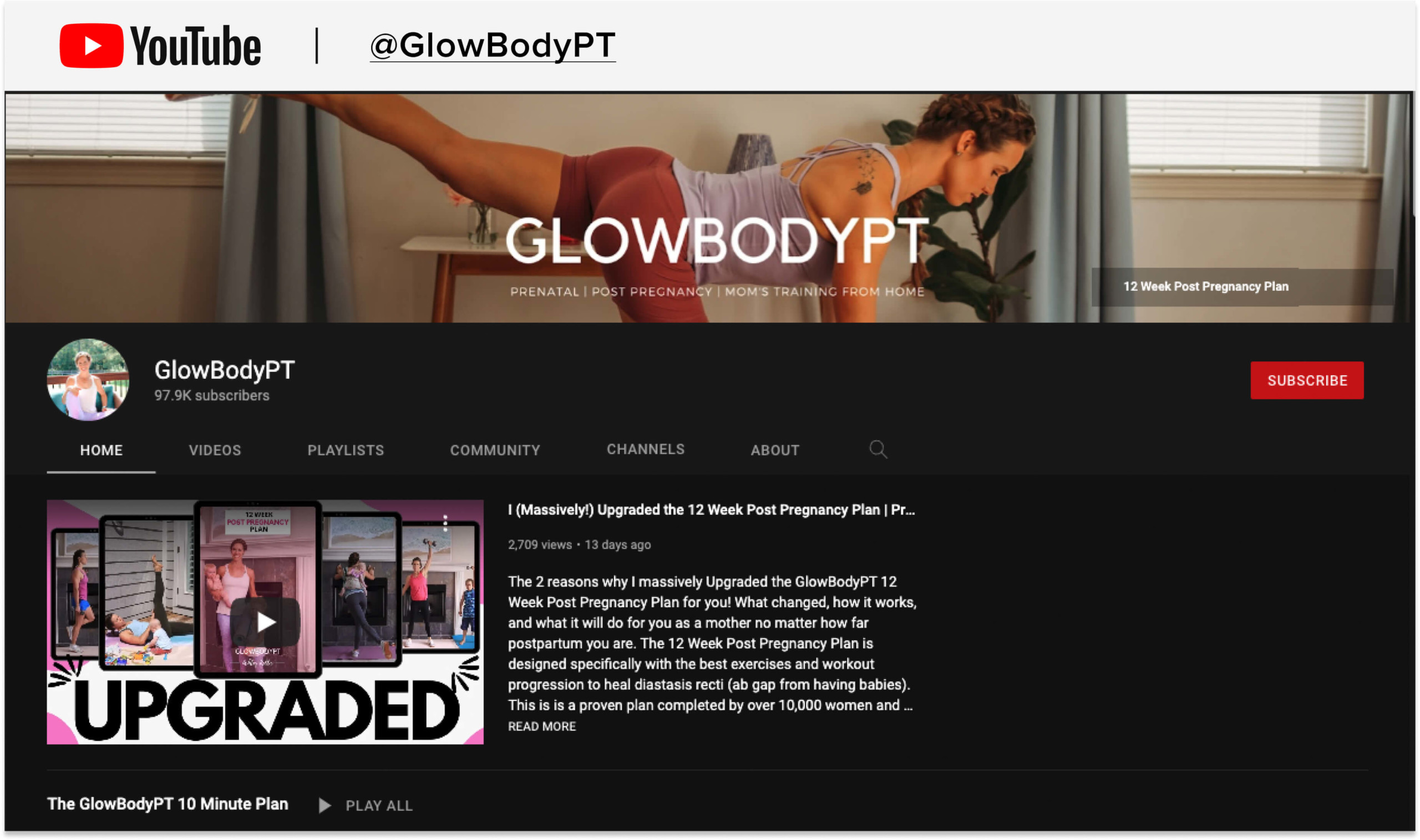
The main difference? VOD is about choosing and accessing video content whenever you want, while streaming is the real-time delivery of that content to your device. VOD uses streaming technology, but not all streaming is VOD.
For example, live streaming brings you events as they happen, not pre-recorded stuff.
Types of video-on-demand (SVOD, TVOD, AVOD)
When it comes to video-on-demand (VOD) platforms, there are three main models that cater to different needs and video monetization strategies:
- Subscription video-on-demand (SVOD)
- Transactional video-on-demand (TVOD)
- Ad-supported video-on-demand (AVOD)
Each of these models offers something unique, so there’s a VOD platform out there to suit every taste and viewing habit. Let’s break these down.
1. SVOD (subscription video-on-demand)
Think of SVOD as your all-you-can-watch buffet for movies and TV shows. Platforms like Netflix, Hulu, and Disney+ operate on this model. You pay a monthly or yearly fee, and in return, you get unlimited access to their entire library of video content.
This is a great option if you’re a binge-watcher or someone who loves having VOD content at your fingertips without worrying about extra charges.

2. TVOD (transactional video-on-demand)
TVOD is like going to a digital movie rental store. Platforms such as iTunes and Amazon Prime Video let you pay for individual pieces of content—whether that’s renting a movie for a weekend or buying a show to watch anytime you want.
This model is perfect for those who watch sporadically or prefer to own the content they love.
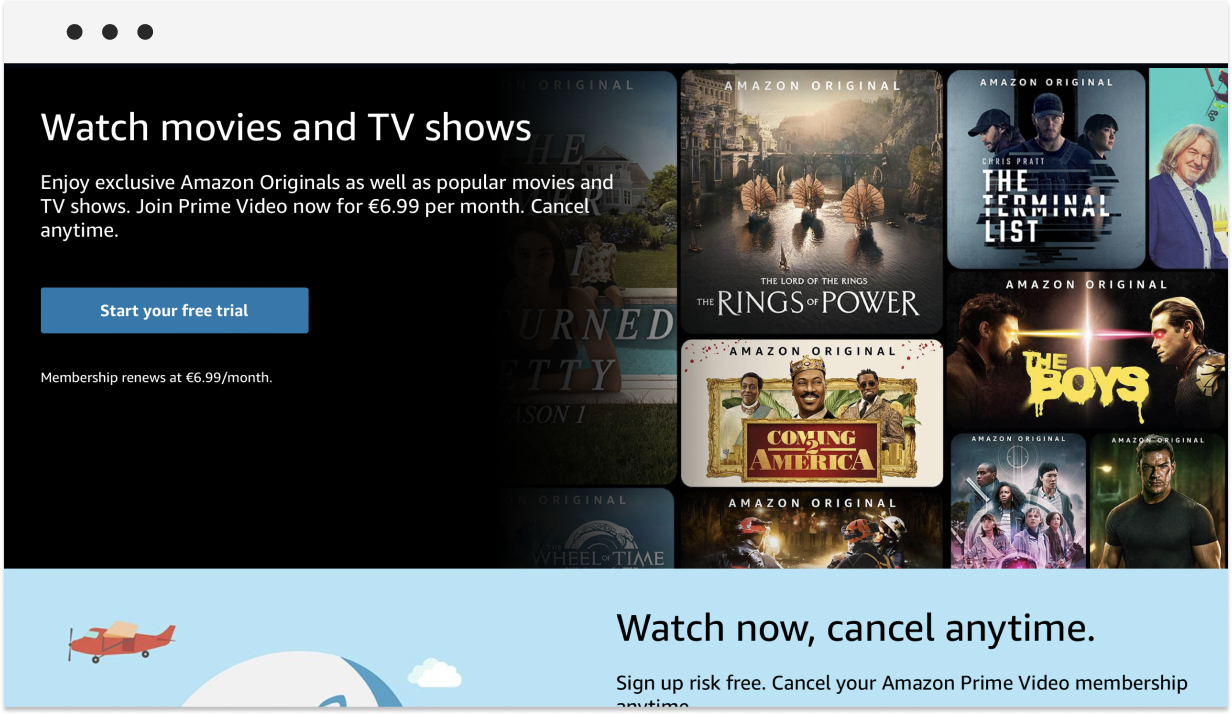
3. AVOD (ad-supported video-on-demand)
AVOD is the freebie route where you get to watch video content without paying a dime. The catch? You’ll have to sit through some ads. YouTube is the poster child for AVOD, offering a mix of user-generated and professional content.
It’s ideal for viewers who don’t mind commercials and are looking for free access to a wide variety of videos.
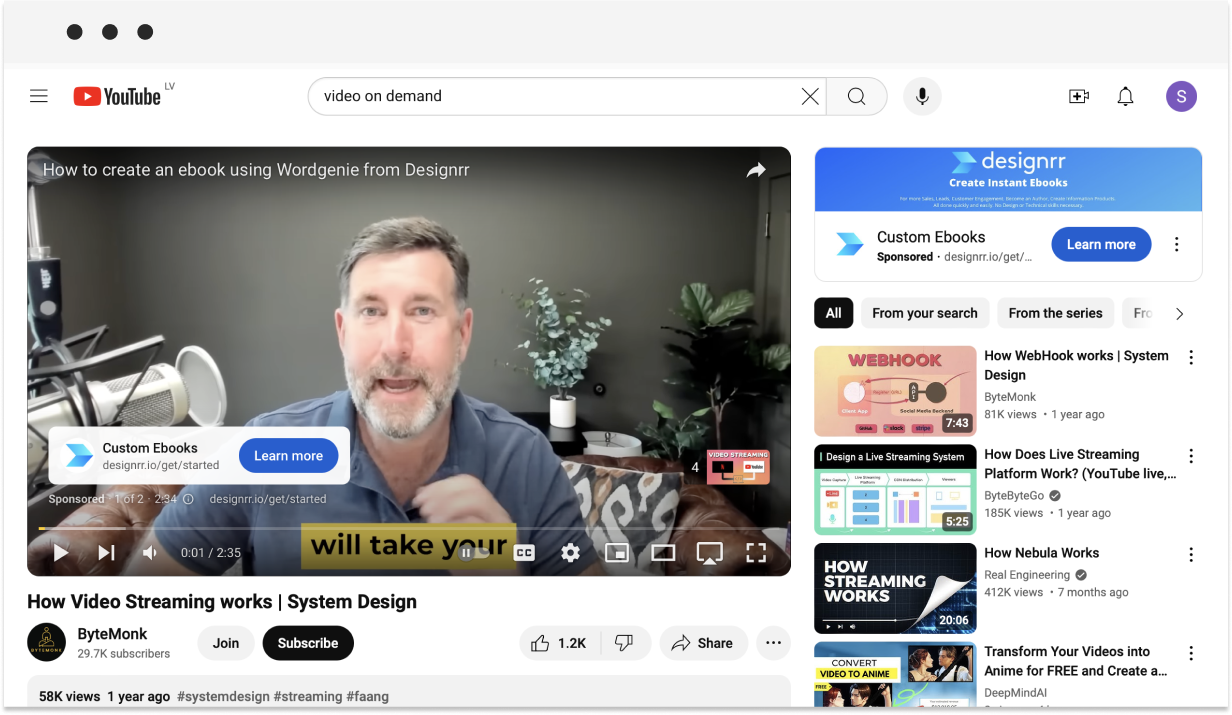
Monetization options (subscriptions, pay-per-view, ad-supported)
Choosing the right way to monetize your video-on-demand (VOD) really depends on your content, audience, and what you want to achieve with your business.
No matter which model you choose, understanding your video content and audience is key to making the best decision for your VOD platform. So, let’s dive into the main video monetization options.
1. Subscriptions
If you’re producing a steady stream of videos, the subscription model could be your best friend. By charging a recurring fee, you set up a reliable income stream. This is perfect for creators who offer ongoing value, like courses, fitness programs, or entertainment series.
It’s also a great way to build loyalty—subscribers are more likely to stay engaged with your content over time.
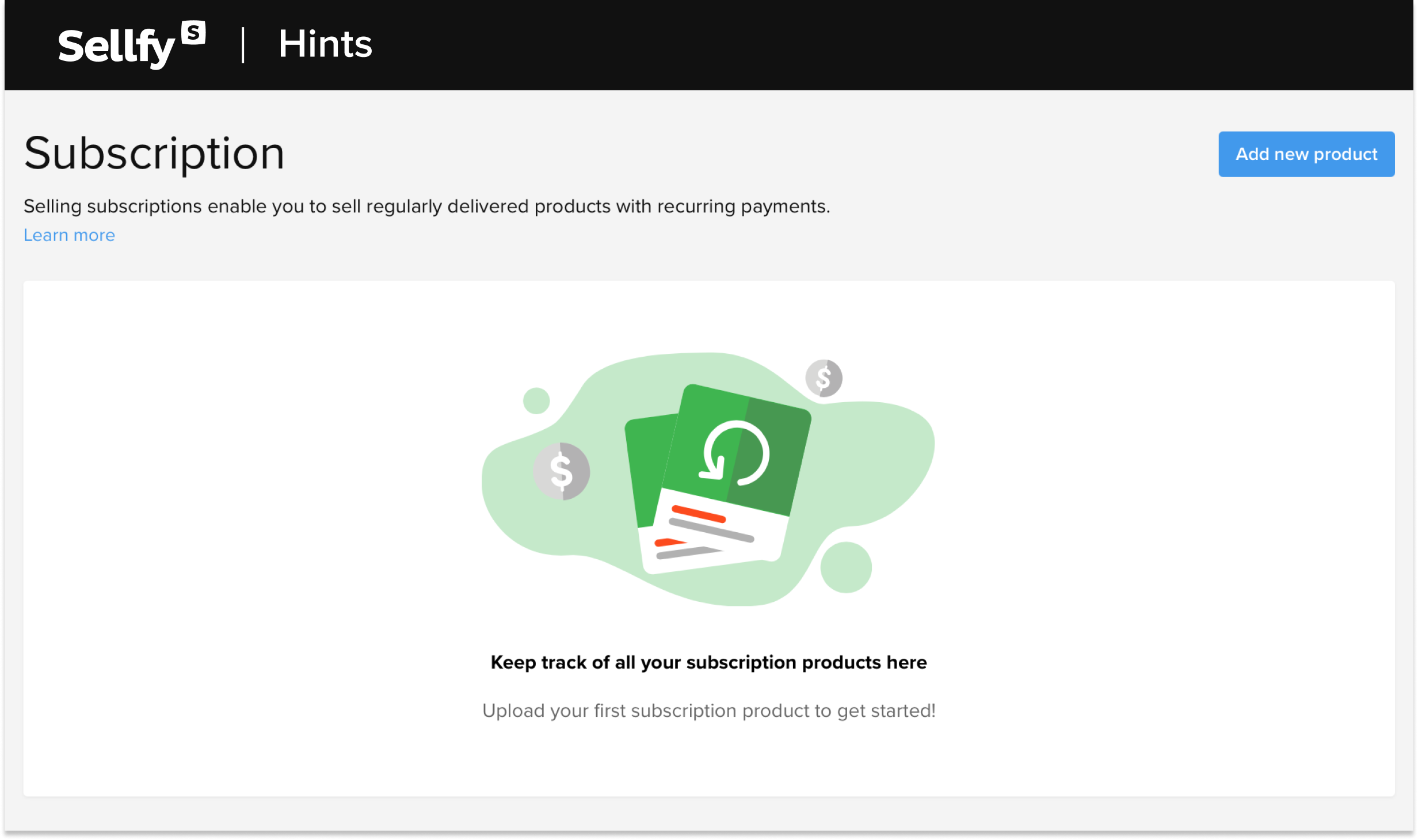
2. Pay-per-view
For those one-off events or special releases, the pay-per-view model is ideal. It lets you monetize individual pieces of content, whether it’s a live stream, a special release, or premium content that your audience is willing to pay for.
You can set different prices for different types of content, giving you a lot of flexibility in how you earn money.

3. Ad-supported
If your goal is to reach a larger audience and you don’t mind incorporating ads into your content, the ad-supported model could be the way to go.
While it might not bring in as much money per view as subscriptions or pay-per-view, it can be highly lucrative if you have a large, engaged audience. It’s also a fantastic way to offer free content while still generating revenue.
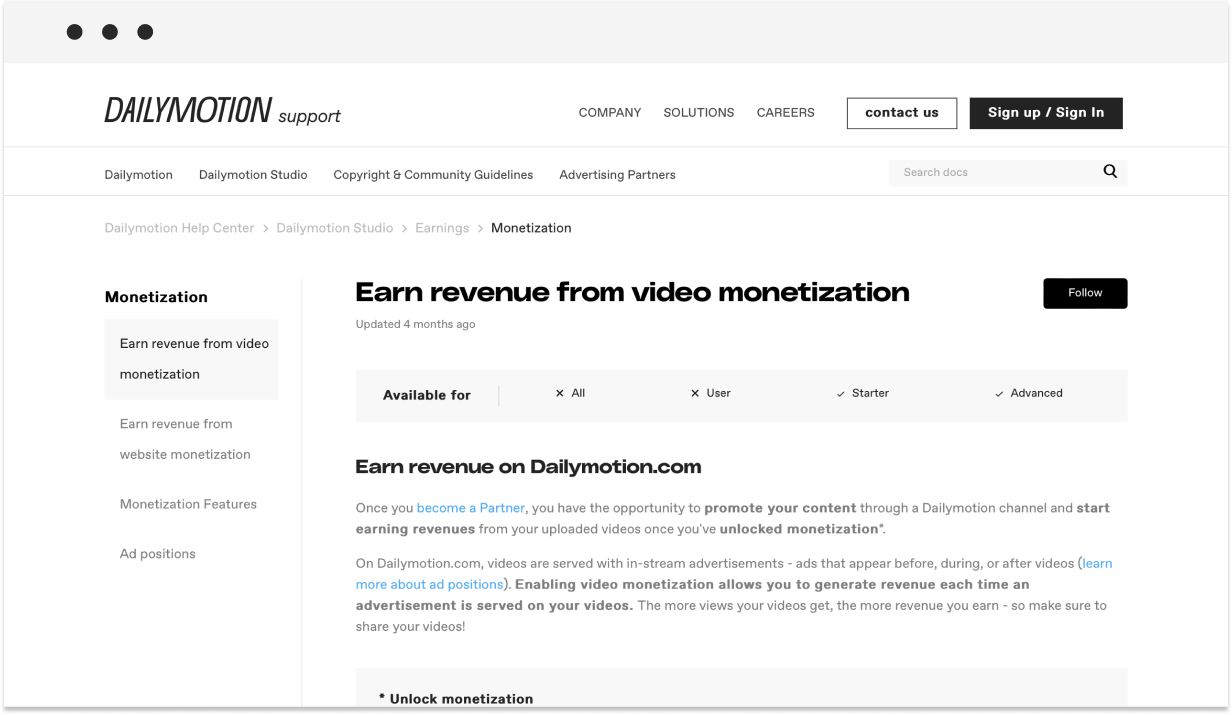
Features to look for in a VOD platform
When you’re picking out a VOD platform, it’s super important to think about the features that will best support your content and help you reach your business goals.
Here are some key features you should be on the lookout for:
- Video format support. Make sure the video-on-demand platform supports a variety of video formats. You’ll want compatibility with formats like AVI, MPEG, MP4, and WebM to ensure your audience gets the best video quality possible.
- Bandwidth & storage. You should look for platforms that offer unlimited bandwidth and plenty of storage space. This is especially crucial if you plan on uploading large files or lots of content. It ensures your audience can watch your videos without any annoying interruptions or delays.
- Monetization tools. Go for a video-on-demand platform that offers different video monetization options, such as subscriptions, pay-per-view, and ad-supported models. This way, you can diversify your revenue streams and cater to various audience preferences.
- Customization & branding. Your VOD platform should let you customize your storefront or player to match your brand identity. This includes adding logos, changing colors, and creating a seamless user experience that aligns perfectly with your brand.
- Security & DRM. Security is non-negotiable when it comes to protecting your content. Look for platforms that offer strong security features, including Digital Rights Management (DRM), to prevent unauthorized access or piracy.
- User analytics. Analytics tools are essential for understanding your audience and tweaking your content strategy. A good VOD platform should give you insights into viewer behavior, engagement metrics, and revenue performance.
- Customer support. Reliable customer support can be a real lifesaver, especially if you run into technical issues or need help with monetization strategies. Choose platforms that offer 24/7 support or even better, a dedicated account manager.
Keep these features in mind, and you’ll be well on your way to choosing the perfect VOD platform for your needs.
13 best VOD platforms to consider
Picking the right video-on-demand (VOD) platform can feel like a daunting task, especially with so many choices available. Since we’ve already discussed why Sellfy is the ideal VOD platform choice, let’s explore 13 other top VOD platforms you might want to check out. Each one comes with its own unique pricing plans, features, and a mix of pros and cons.
1. YouTube
We all know YouTube—it’s the go-to name for video streaming and sharing, with billions of active users. Launched in 2005, it has grown into a massive content ecosystem where creators can share videos globally, monetize their work, and interact with viewers.
YouTube offers various video monetization options like ads, channel memberships, Super Chat, and YouTube Premium. Its sophisticated recommendation algorithms help videos gain visibility through personalized suggestions.

However, the reliance on ad revenue means creators are subject to YouTube’s policies and fluctuating CPM rates. Plus, creators have less control over content presentation and monetization compared to other VOD platforms.
For those seeking an ad-free experience, YouTube Premium is available at $11.99 per month, which offers perks like background play and access to YouTube Originals.
Pros:
- Reaches a massive audience.
- Free to upload and share content.
- Video monetization through ads, memberships, and Super Chat.
Cons:
- Revenue heavily depends on ads.
- Limited control over monetization and content presentation.
- Ad policies can impact revenue potential.
Pricing plans:
- Free to upload and share videos.
- YouTube Premium subscription for $11.99/month (ad-free experience for viewers).
2. Loom
Loom is a user-friendly video-on-demand platform for creating and sharing quick videos, ideal for educational content and team communication. Unlike traditional VOD services, Loom specializes in recording and sharing short videos like tutorials and presentations.
Its easy-to-use interface lets you capture your screen, voice, and face all at once, which makes it perfect for remote teams and educators who need to explain complex ideas visually.
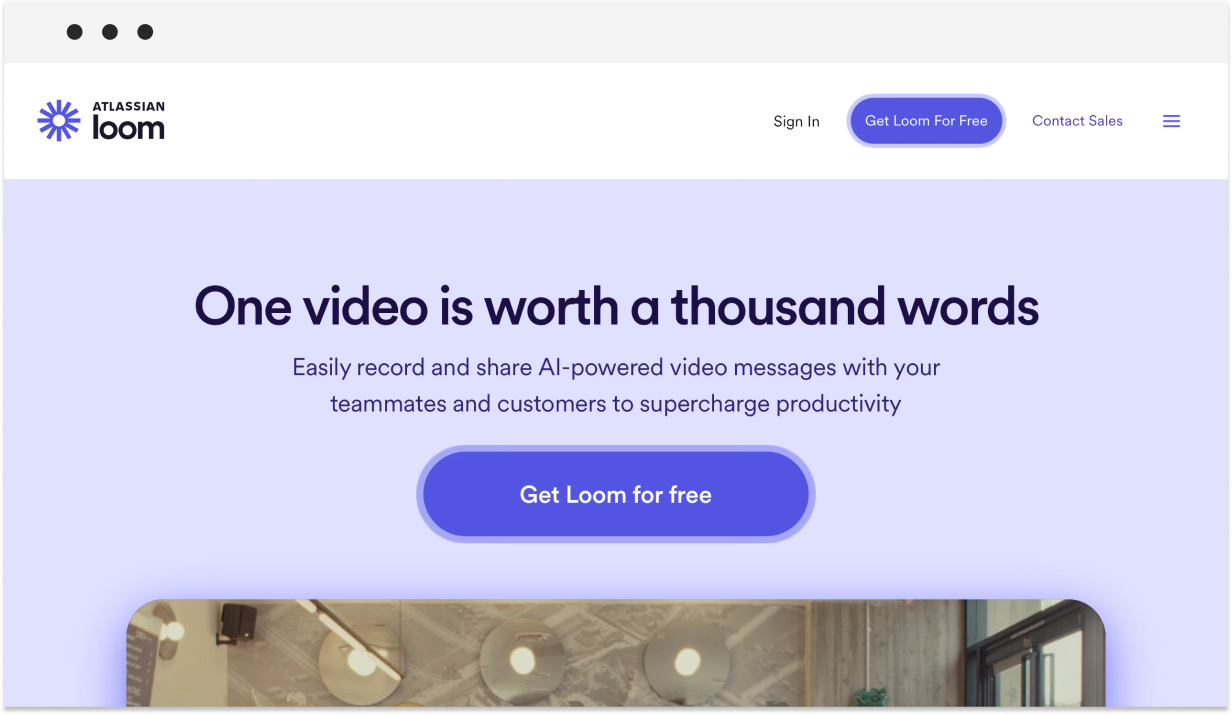
You can effortlessly share Loom videos via links, and viewers can leave time-stamped comments for interactive communication. However, it’s not built for large-scale content distribution or video monetization, and customization is limited.
The free plan offers up to 25 videos, while the Business plan at $8/month per creator includes unlimited videos and advanced features like call-to-action buttons and engagement analytics.
Pros:
- Easy to use.
- Ideal for tutorials and team communication.
- Offers viewer analytics.
Cons:
- Limited customization options.
- Not designed for large-scale VOD distribution.
Pricing plans:
- Free plan available (up to 25 videos).
- Business plan starts at $8/month per creator (unlimited videos, additional features).
3. Wistia
Wistia is a video hosting platform perfect for businesses focused on lead generation and audience engagement.
It offers advanced tools like heatmaps, viewer tracking, and in-depth analytics to help you understand your video performance and viewer interaction.
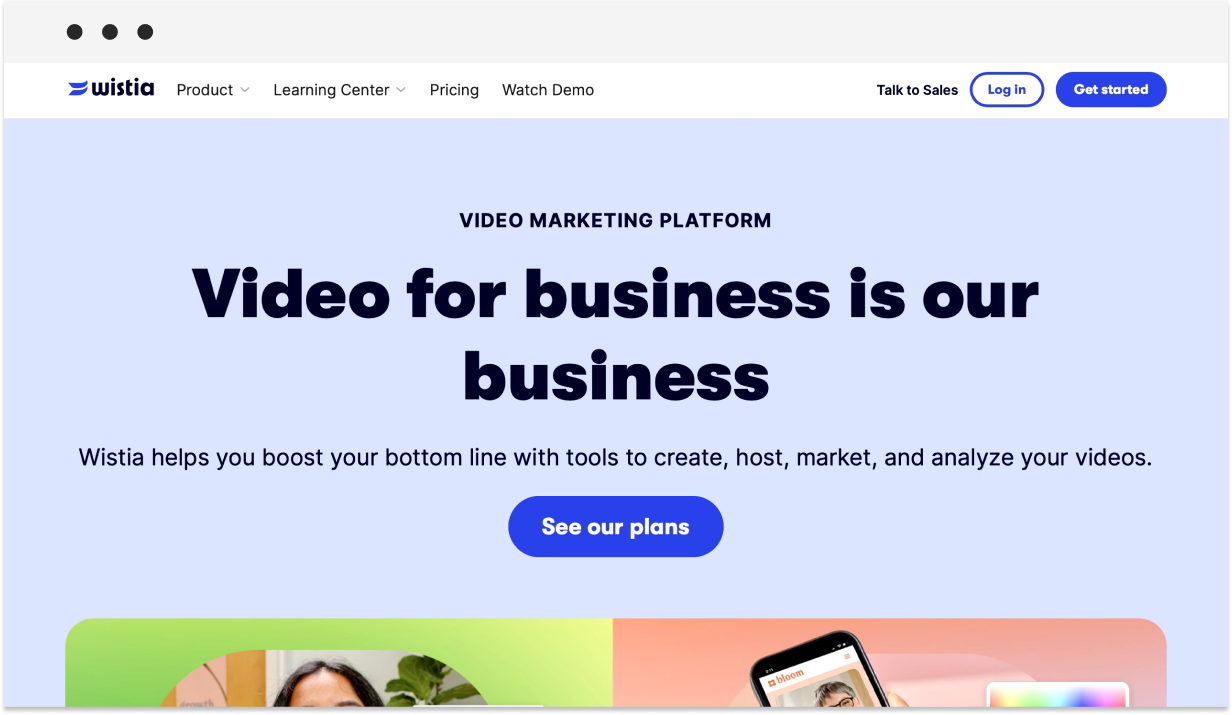
With Wistia’s customizable video player, you can maintain your brand’s visual identity by adding logos, colors, and call-to-actions directly within the player. This is essential for creating a cohesive brand experience.
It also integrates smoothly with marketing tools like HubSpot, Marketo, and Google Analytics for seamless lead tracking.
But, its pricing might be steep for smaller businesses, with the Pro plan starting at $99 per month for 10 videos, though a free plan is available for up to 3 videos and 200 GB of bandwidth.
Pros:
- Advanced analytics.
- Highly customizable video player.
- Focus on video marketing.
Cons:
- Expensive compared to other platforms.
- Limited content monetization options.
Pricing plans:
- Free plan available (up to 3 videos, 200 GB bandwidth).
- Pro plan starts at $99/month (10 videos, additional bandwidth available for purchase).
4. JW Player
JW Player is a standout for video streaming, thanks to its adaptive bitrate streaming that ensures great video quality regardless of internet speed.
Originally an open-source media player, it has grown into a robust platform for video hosting, live streaming, and monetization.
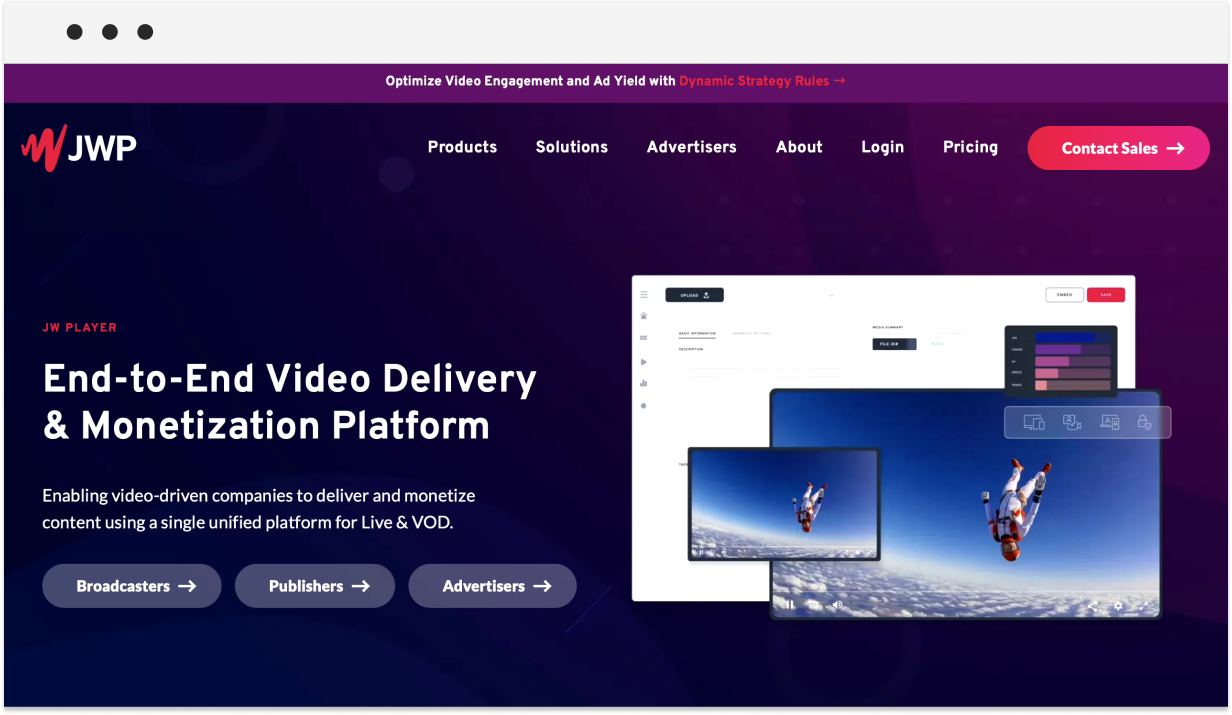
JW Player supports various monetization methods, like advertising, pay-per-view, and subscriptions. It also offers DRM protection and extensive API and SDK support, which makes it a solid choice for developers.
However, its complexity and higher pricing tiers might be challenging for beginners or small businesses. The Starter plan costs $10/month, offering 150 GB of hosting and 500 GB of video streaming, with more advanced features available at higher tiers.
Pros:
- Excellent VOD streaming platform quality with adaptive bitrate.
- Robust DRM protection.
- Extensive API and SDKs for developers.
Cons:
- Steep learning curve for beginners.
- Higher cost for advanced features.
Pricing plans:
- Starter plan at $10/month (150 GB hosting, 500 GB VOD streaming).
- Enterprise solutions available (custom pricing based on needs).
5. Vimeo OTT
Vimeo OTT is a specialized extension of Vimeo, perfect for creators and businesses aiming to launch their own subscription-based VOD streaming services.
It provides a complete video-on-demand solution for those who want full control over their brand, content, and revenue.

With Vimeo OTT, you can set up a fully branded service, complete with your own website and apps, distributing content across mobile, desktop, and TV platforms.
It supports various monetization models like subscriptions (SVOD), pay-per-view (TVOD), and ad-supported content (AVOD). The video-on-demand platform ensures high-quality VOD streaming with adaptive bitrate for a smooth viewer experience.
But, setting up an OTT service can be complex and requires technical know-how and investment. Pricing starts at $1/month per subscriber, plus a 2% transaction fee, with custom pricing for advanced features.
Pros:
- Full branding control.
- Supports SVOD, TVOD, and AVOD.
- High-quality VOD streaming platform with adaptive bitrate.
Cons:
- Expensive, especially for small creators.
- Requires more technical knowledge to set up.
Pricing plans:
- Starter plan at $1/month per subscriber + 2% transaction fee.
- Custom pricing for advanced features and higher subscriber counts.
6. Brightcove
Brightcove is a video hosting platform suitable for big businesses, media companies, and broadcasters. Known for its strong security, advanced monetization, and powerful analytics, it’s a favorite among large organizations.
One standout feature is server-side ad insertion, which ensures a smooth viewing experience by avoiding the usual ad interruptions. Brightcove’s security is top-tier, offering encryption, tokenized access, and DRM to protect your content.
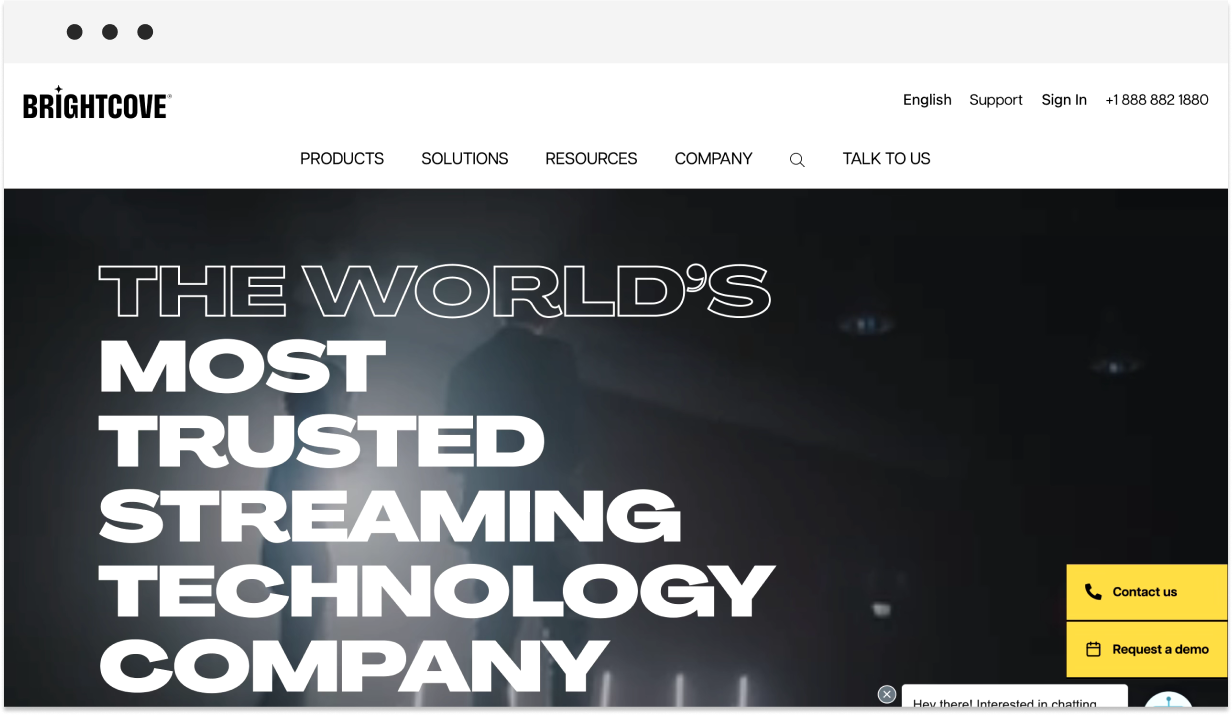
Plus, their detailed analytics help optimize your content and marketing strategies by giving valuable insights into viewer behavior.
However, keep in mind that Brightcove’s pricing and complexity are tailored for larger organizations with bigger budgets and technical know-how, which makes it less ideal for small businesses and individual creators.
Pros:
- Top-tier security and support.
- Advanced monetization including server-side ad insertion.
- Detailed analytics and reporting.
Cons:
- High cost, geared towards larger organizations.
Pricing plans:
- Custom pricing based on business needs and usage.
7. Uscreen
Uscreen is a VOD platform that lets creators monetize content through subscriptions, pay-per-view, and live streaming.
What sets Uscreen apart is its customizable storefronts that enable creators to brand their video libraries for a unique user experience.
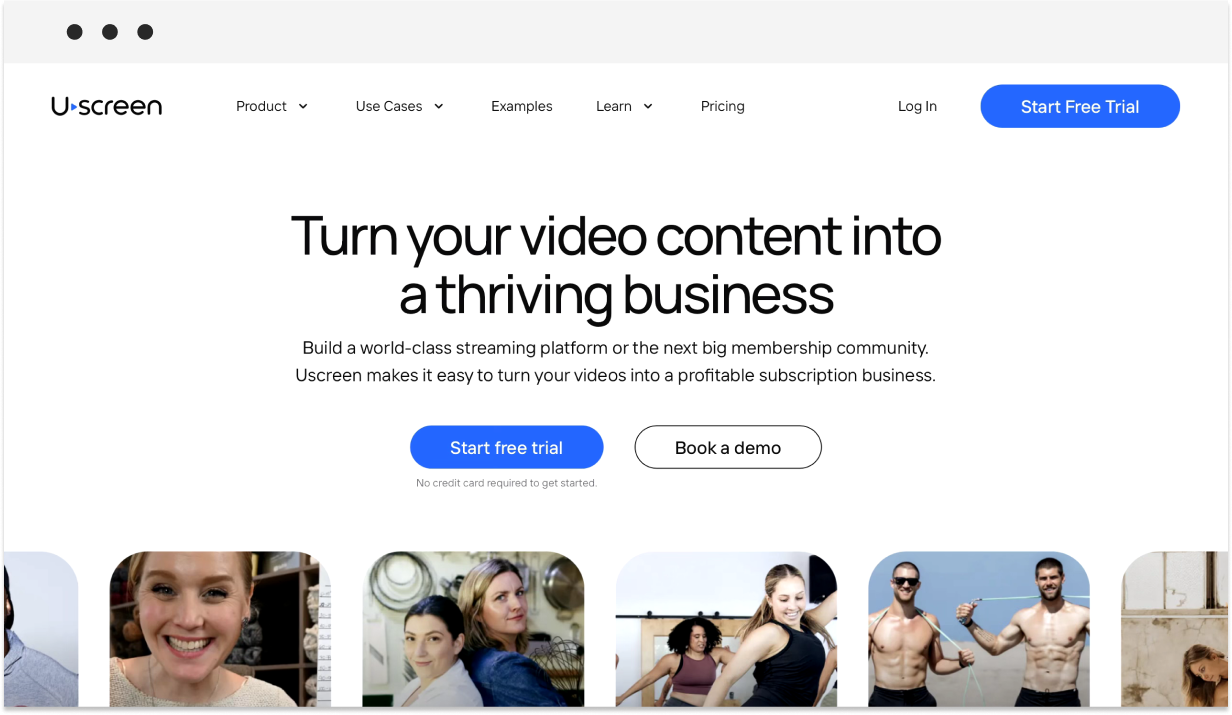
It’s user-friendly, even for those without tech skills, and includes built-in marketing tools like email campaigns and promos to grow audiences and boost revenue. Multiple payment gateways make it easy to accept payments worldwide.
While Uscreen’s pricing starts at $99/month plus $0.50 per subscriber, which might be steep for small creators, its comprehensive features make it a strong pick for anyone serious about building and monetizing a video business.
Pros:
- Built-in monetization tools.
- Customizable storefront with full branding control.
- Supports SVOD, TVOD, and live streaming.
Cons:
- Higher cost for small-scale creators.
- Requires commitment to a monthly subscription.
Pricing plans:
- Basic plan at $99/month + $0.50 per subscriber.
- Growth plan at $199/month + $0.50 per subscriber (additional features).
8. Dacast
Dacast is a user-friendly platform perfect for both live streaming and VOD, which makes it popular with businesses and individuals needing reliable video hosting.
It offers various monetization options like pay-per-view, subscriptions, and ads, giving you flexibility in revenue generation. One standout feature is its 24/7 customer support, ensuring you get help whenever you need it.
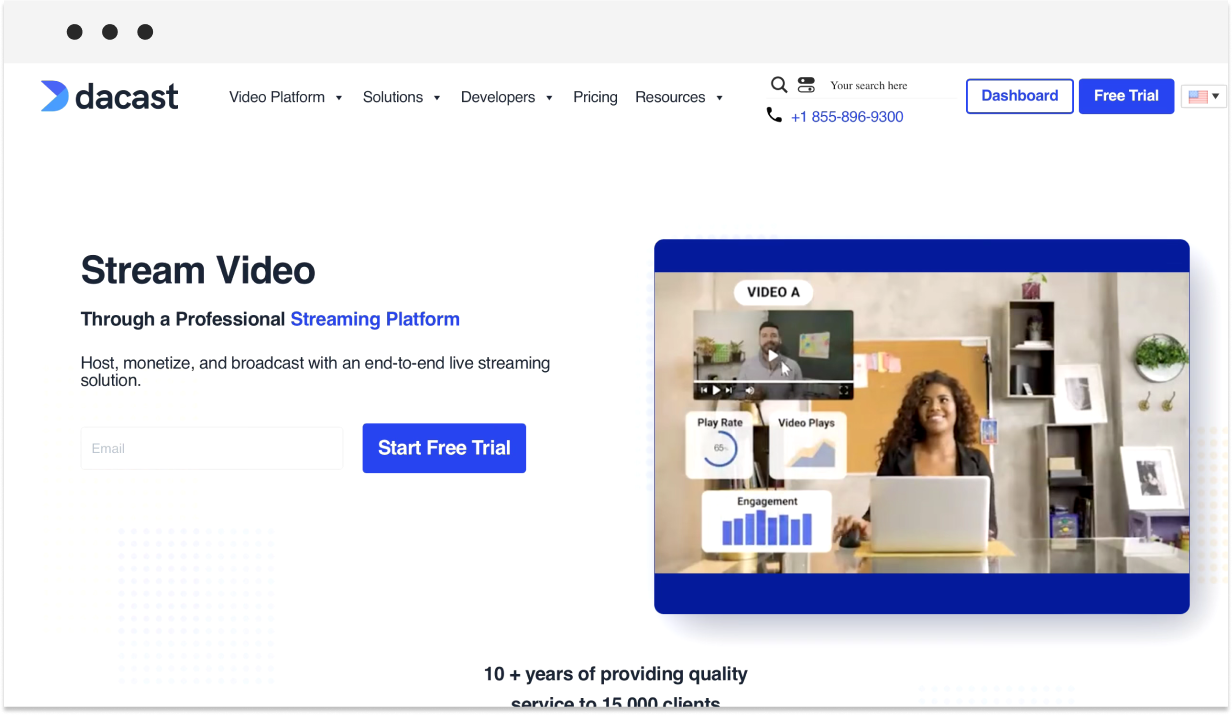
Dacast also allows for white-label branding, so your video player can match your brand seamlessly. But, be mindful of bandwidth costs, which can add up quickly, especially with a large audience or high-definition streams.
Pricing starts at $39/month, including 100 GB of bandwidth and 50 GB of storage, with more comprehensive plans available for larger needs.
Pros:
- Easy-to-use video-on-demand platform.
- Supports pay-per-view, subscriptions, and ad-supported models.
- Excellent customer support.
Cons:
- Bandwidth costs can add up quickly.
- Limited customization options for the video player.
Pricing plans:
- Starter plan at $39/month (100 GB bandwidth, 50 GB storage).
- Premium plans available with more bandwidth and storage (custom pricing).
9. Kaltura
Kaltura is a robust and customizable online video platform designed for large enterprises and educational institutions. It boasts a wide range of features like video hosting, live streaming, webcasting, and analytics.
Because Kaltura is open-source, it offers significant flexibility for businesses with specific needs. Its extensive API support allows developers to integrate video capabilities into existing systems or create new applications.
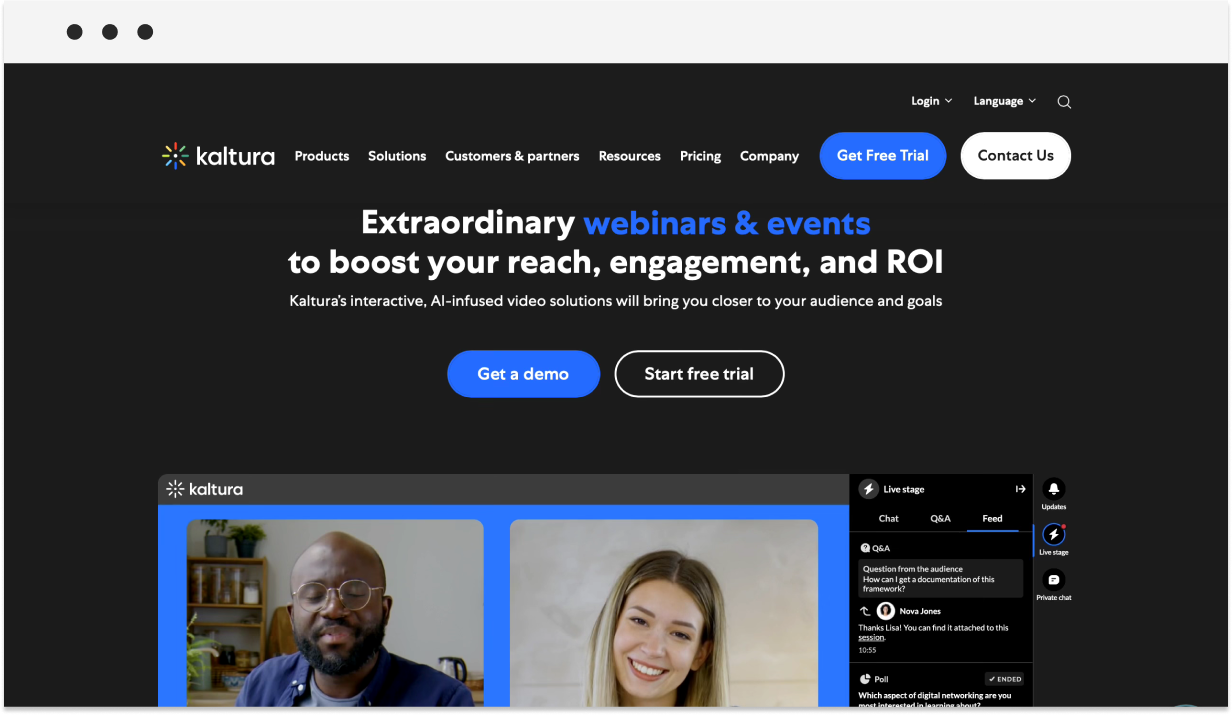
Kaltura excels in the education sector, providing tools for online learning and virtual classrooms. But, its complexity and custom-based pricing may be challenging for smaller organizations or those without a dedicated technical team.
While its enterprise-level capabilities are impressive, it might not be the best fit for smaller-scale users.
Pros:
- Extensive API support.
- Strong focus on enterprise and educational markets.
- Scalable and flexible, suitable for large organizations.
Cons:
- Complex to set up and use.
- High cost for advanced features and support.
Pricing plans:
- Custom pricing based on business needs and usage.
10. Muvi
Muvi is your go-to OTT platform if you want to launch your own branded video streaming service. It supports various monetization models like subscriptions (SVOD), pay-per-view (TVOD), and ad-supported content (AVOD).
Muvi’s online video platform is highly customizable, letting you create a complete branded experience with your own website and apps for mobile and smart TV.
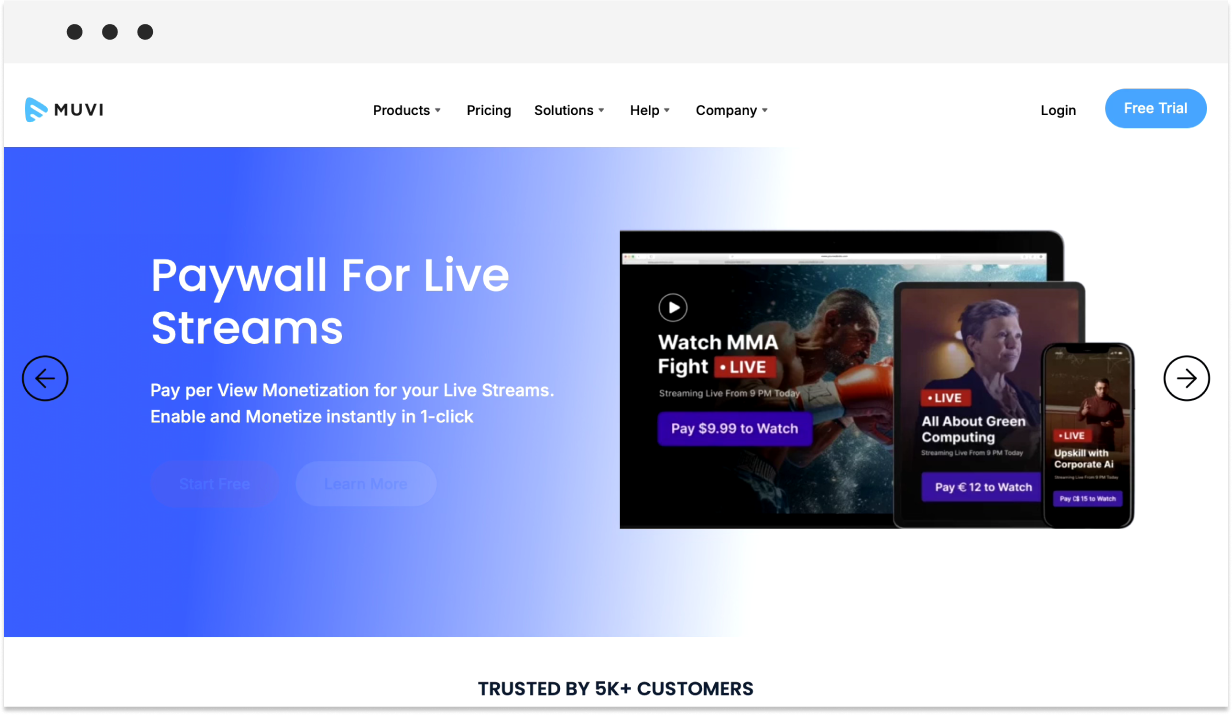
Beyond video streaming, Muvi offers live streaming, audio streaming, and podcast hosting, so it’s a versatile choice for content creators. However, its pricing starts at $399/month, which might be steep for smaller creators.
It also has a steeper learning curve, especially for those who aren’t tech-savvy, but its rich features make it a powerful tool for comprehensive VOD streaming services.
Pros:
- Fully customizable OTT platform.
- Supports SVOD, TVOD, and AVOD models.
- Includes a mobile app.
Cons:
- Expensive, particularly for small creators.
- Steeper learning curve for non-technical users.
Pricing plans:
- Standard plan at $399/month (white-label, custom features available).
- Custom pricing for enterprise solutions.
11. Vidyard
Vidyard stands out as a video marketing platform tailored specifically for businesses. Unlike traditional VOD platforms, Vidyard is perfect for marketing and sales teams, with tools that integrate seamlessly with CRM systems like Salesforce and HubSpot.
Its advanced analytics offer detailed insights into viewer engagement and conversion rates, helping businesses optimize their video strategies and track ROI.
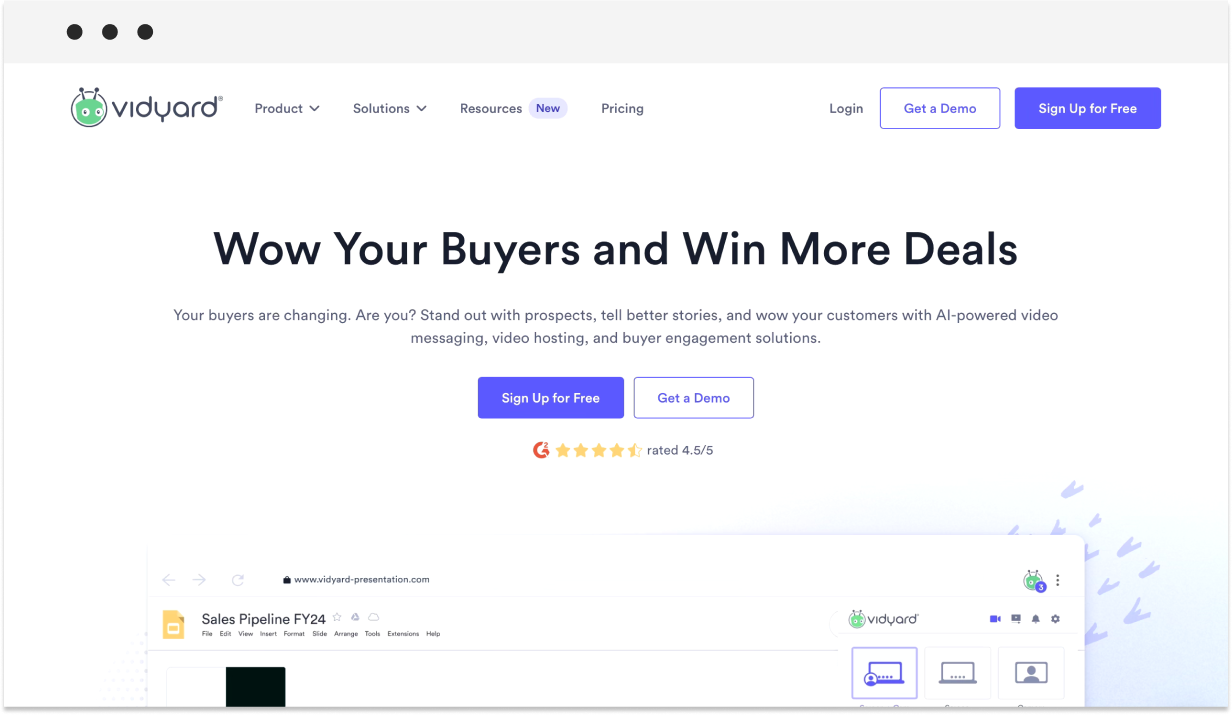
Vidyard also allows for easy video personalization at scale, making it simple to create customized experiences for different audience segments.
While it lacks some monetization tools found in other VOD platforms, Vidyard’s focus on marketing makes it a powerful choice. You can start with a free plan, or opt for the Pro plan at $15/month for more features and branding options.
Pros:
- Excellent for video marketing and sales.
- Advanced analytics.
- Easy to create, share, and track video content.
Cons:
- Not a traditional VOD platform; more focused on marketing.
- Limited monetization options.
Pricing plans:
- Free plan available.
- Pro plan starts at $15/month (more features and branding options).
12. SproutVideo
SproutVideo is a secure video hosting platform, great for businesses that value privacy and data protection. It lets you customize your video player to match your brand and offers advanced analytics to give you deep insights into viewer behavior.
This helps you tweak your content and marketing strategies effectively. In addition, it comes with cool features like video SEO, lead capture forms, and email marketing integrations.

On the flip side, its monetization tools are a bit limited, and it’s not as well-known as some other platforms.
Pricing starts at $24.99/month for the Basic plan with 100 GB bandwidth, and $59.99/month for the Pro plan with 500 GB bandwidth and extra features.
Pros:
- Secure video hosting.
- Strong privacy controls.
- Customizable video player and embedding options.
Cons:
- Limited monetization tools.
- Not as widely known as some competitors.
Pricing plans:
- Basic plan at $24.99/month (100 GB bandwidth).
- Pro plan at $59.99/month (500 GB bandwidth, more features).
13. Wowza
Wowza is known as a live streaming platform with great video-on-demand features. It’s perfect for businesses and developers needing ultra-low latency video-on-demand streaming, essential for live events, gaming, and real-time interactions.
Wowza offers extensive API support, so it’s highly customizable for integrating VOD streaming into apps or websites. It supports various video-on-demand streaming protocols, ensuring compatibility across devices and networks.
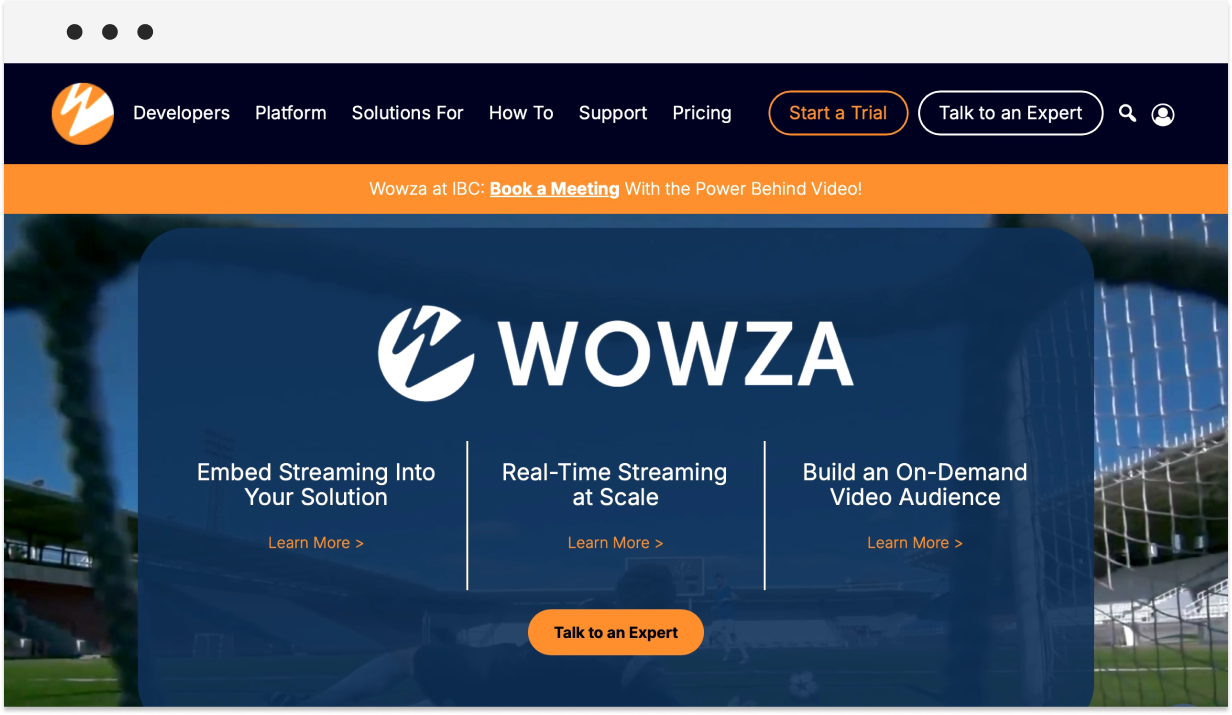
But, its advanced features come at a high cost, and the online video platform’s complexity may be challenging for those without technical know-how.
The pay-as-you-go model starts at $25/month for 500 GB of bandwidth, but larger enterprises can opt for custom pricing plans with more resources and dedicated support.
Pros:
- Powerful live streaming and VOD platform.
- Supports ultra-low latency video-on-demand streaming.
- Highly customizable with extensive API support.
Cons:
- High cost, particularly for advanced features.
- Complex setup, not ideal for beginners.
Pricing plans:
- Pay-as-you-go pricing starts at $25/month (includes 500 GB bandwidth).
- Enterprise solutions available with custom pricing.
Future trends in VOD
As the video-on-demand (VOD) landscape keeps evolving, there are some exciting trends on the horizon that are set to reshape how we consume content.
Virtual & augmented reality (VR & AR)
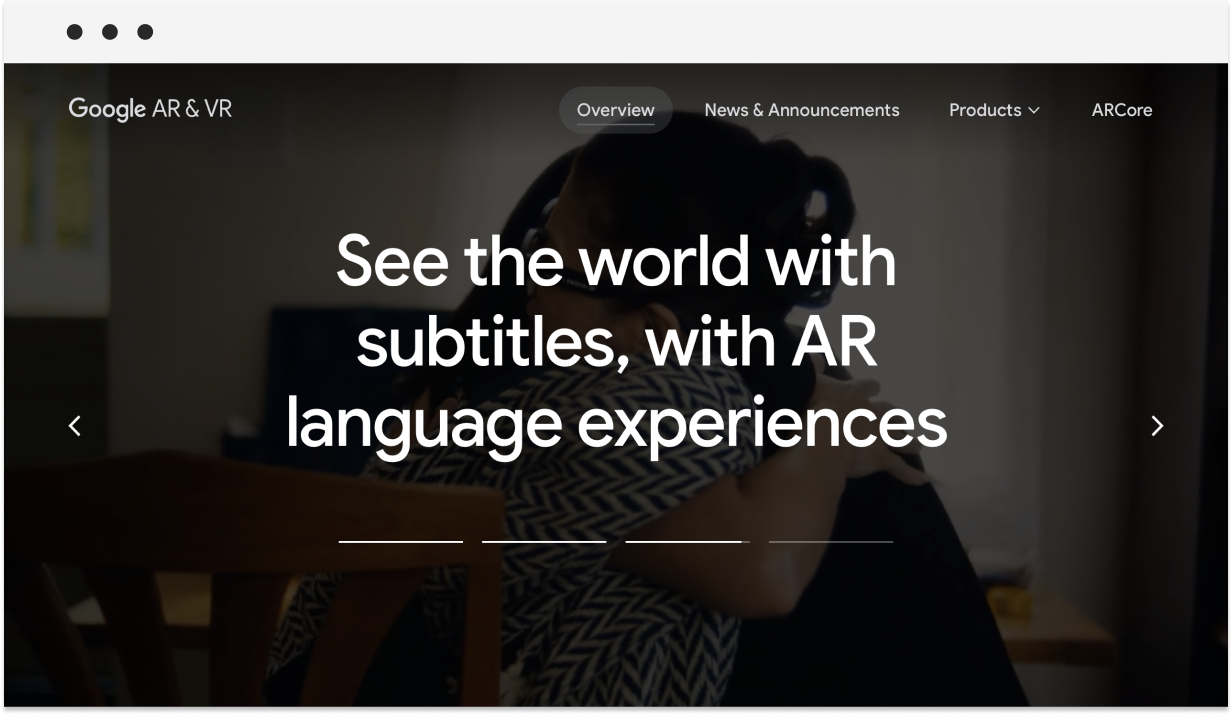
Imagine diving into a movie or a game where you feel like you’re truly part of the action. VR and AR are gearing up to transform our viewing experiences by offering immersive content that feels incredibly real.
This is especially thrilling for gamers, educators, and anyone hosting virtual events.
Interactive content
Ever wished you could decide the fate of your favorite character? Interactive videos are making that possible! These videos let viewers make choices that influence the storyline, creating a more engaging and personalized experience.
It’s no wonder they’re becoming a hit, as they keep viewers hooked and coming back for more.
AI & personalization
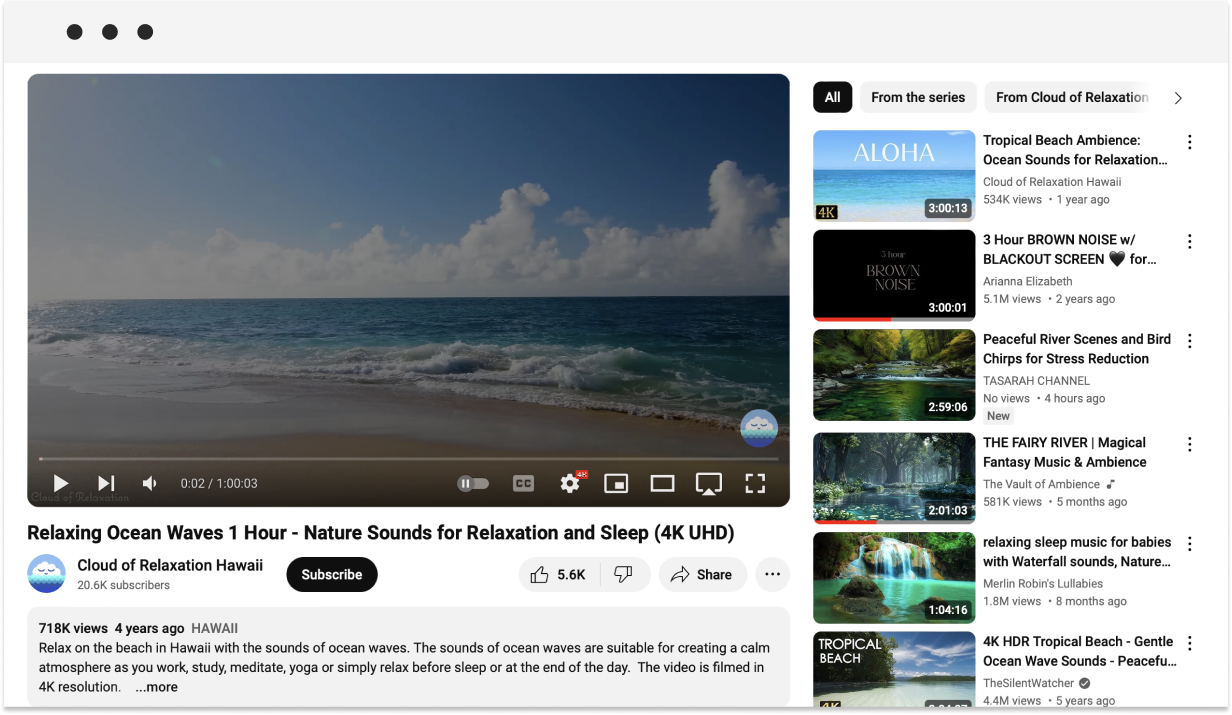
Say goodbye to endless scrolling! Thanks to AI-driven recommendations, VOD platforms can now suggest content tailored to your tastes.
By analyzing your viewing habits and preferences, these platforms ensure you spend less time searching and more time enjoying shows and movies you’ll love.
Live streaming & real-time interaction
Live streaming is taking off, especially with social media boosting its popularity.
Whether it’s a live Q&A with your favorite influencer or an interactive shopping event, real-time interaction is becoming a fantastic way to connect with audiences and keep them engaged.
Final thoughts on the future of video-on-demand platforms
The future of VOD platforms is brighter than ever, thanks to non-stop tech innovations and our unquenchable thirst for digital content.
Imagine more immersive and interactive experiences, all supercharged by AI and machine learning, designed to meet the diverse tastes of viewers around the globe. It’s like the future is now!
For creators and businesses, this is a golden era. The chance to connect with audiences in fresh and creative ways has never been better. But, picking the right video-on-demand platform is going to be crucial for your success.
Take Sellfy, for instance—it’s packed with powerful features, offers great flexibility, and has some creator-friendly monetization options. It’s definitely a top pick for anyone serious about making waves in the VOD scene.






